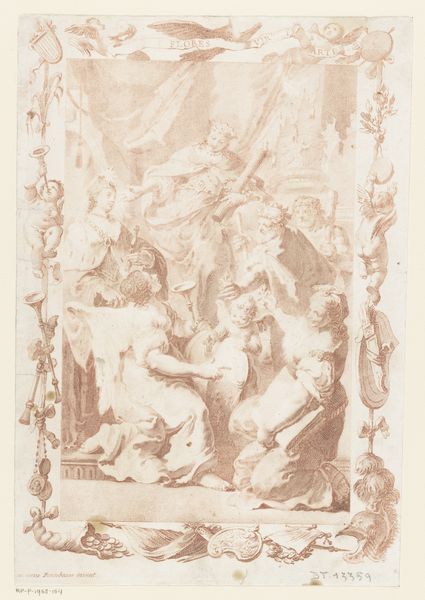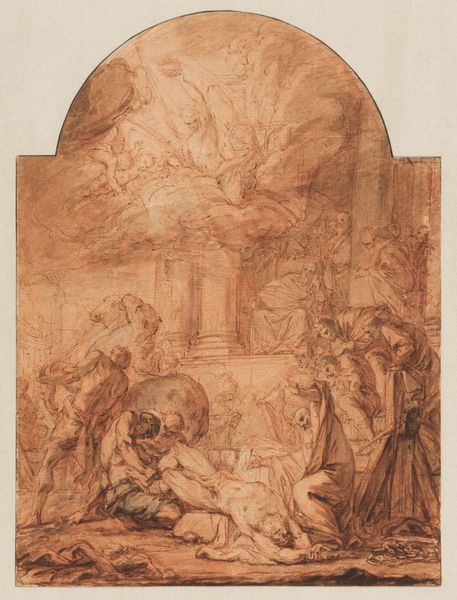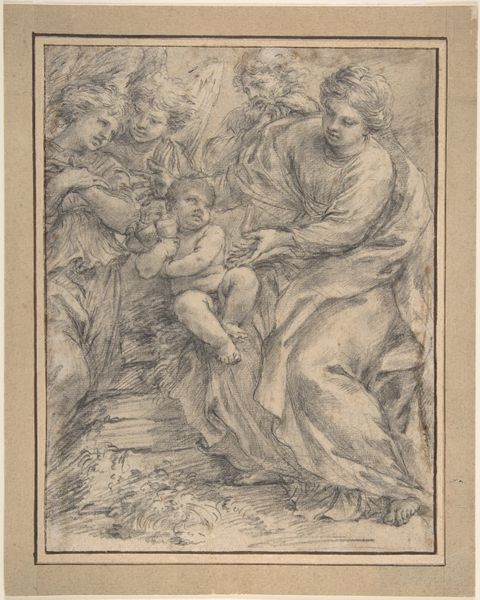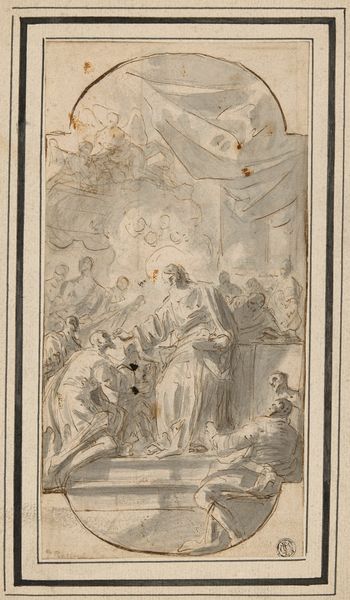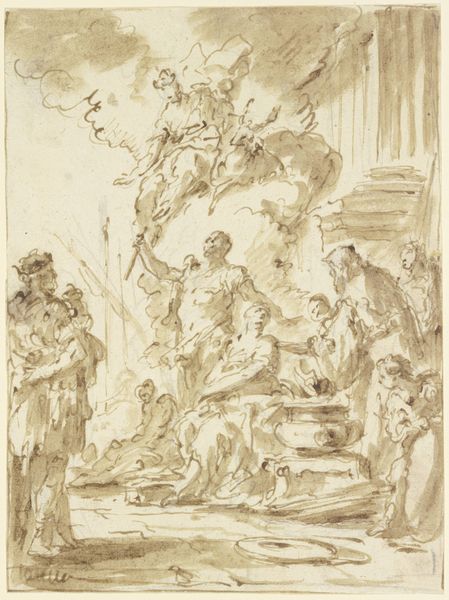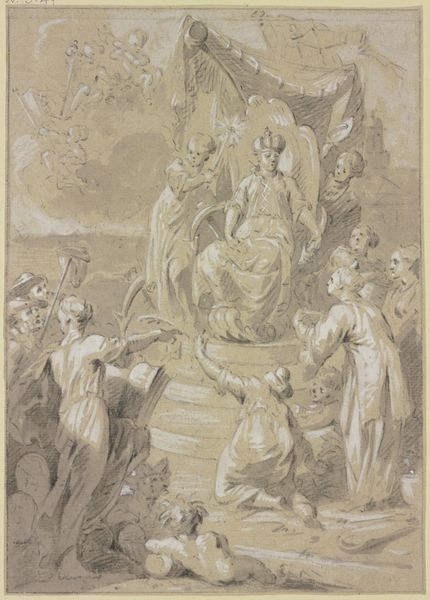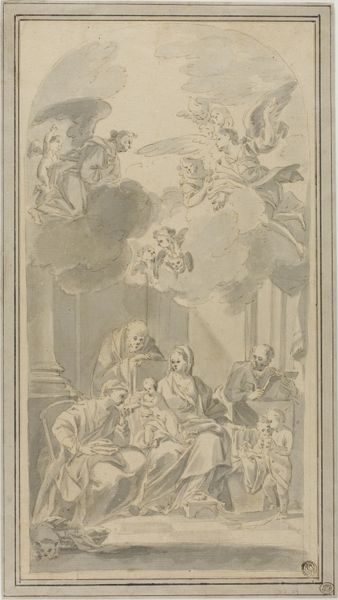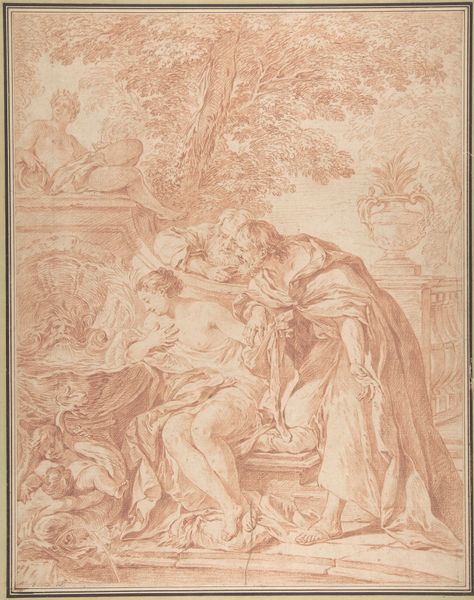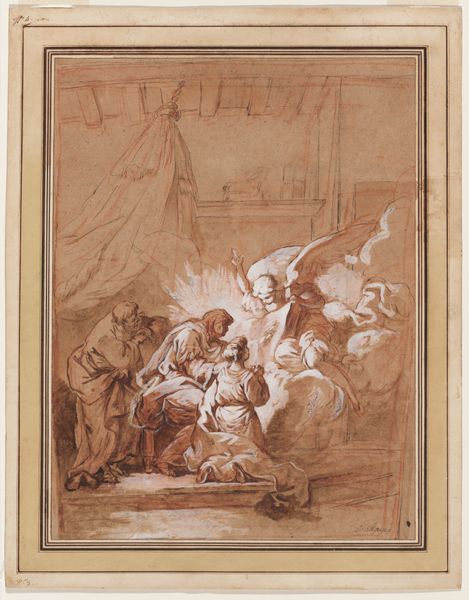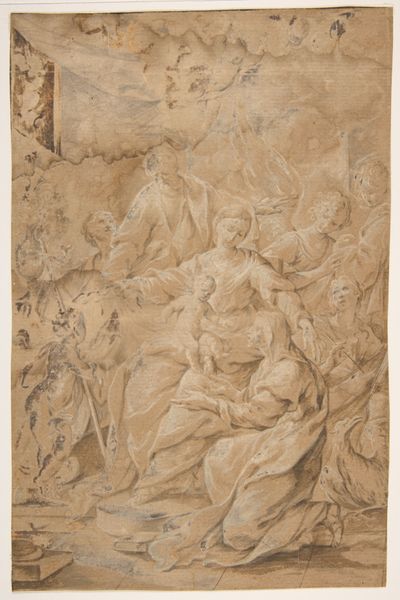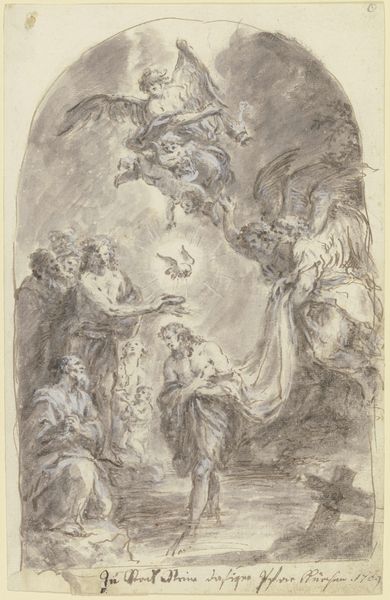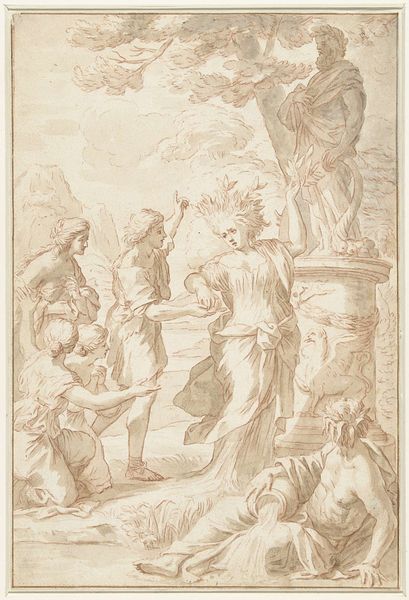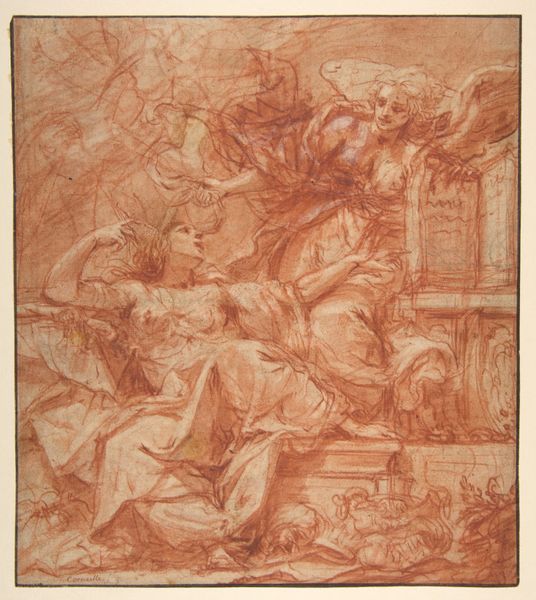![The Apotheosis of Saint Mark [recto and verso] by Pietro Roselli](/_next/image?url=https%3A%2F%2Fd2w8kbdekdi1gv.cloudfront.net%2FeyJidWNrZXQiOiAiYXJ0ZXJhLWltYWdlcy1idWNrZXQiLCAia2V5IjogImFydHdvcmtzL2IxNmRhZjY3LWE2OGMtNGQ4NC04NzNkLTIwZTRlMGMzMzk0MS9iMTZkYWY2Ny1hNjhjLTRkODQtODczZC0yMGU0ZTBjMzM5NDFfZnVsbC5qcGciLCAiZWRpdHMiOiB7InJlc2l6ZSI6IHsid2lkdGgiOiAxOTIwLCAiaGVpZ2h0IjogMTkyMCwgImZpdCI6ICJpbnNpZGUifX19&w=3840&q=75)
drawing, paper, ink
#
drawing
#
baroque
#
etching
#
figuration
#
paper
#
ink
#
history-painting
#
watercolor
Dimensions: overall (lunette): 25 x 13.8 cm (9 13/16 x 5 7/16 in.)
Copyright: National Gallery of Art: CC0 1.0
Curator: This striking drawing, executed in ink and watercolor on paper, is attributed to Pietro Roselli, and is entitled *The Apotheosis of Saint Mark*. It presents us with an arched composition, alive with movement and divine ascension. What are your first impressions? Editor: It feels intensely theatrical. The dynamism is palpable; everyone seems caught up in a moment of ecstatic revelation. There's almost a sense of Baroque drama packed into this relatively small drawing. Curator: Indeed. Roselli captures that specific drama perfectly. We see Saint Mark ascending, surrounded by angels, his figure bathed in light, while earthly figures look on in awe. The scene below is set with what appears to be an altar and various figures, each responding differently to the heavenly vision. What does that juxtaposition of earthly observation and spiritual transport evoke for you? Editor: Well, seeing Saint Mark literally lifted out of his earthly context like this... it immediately raises questions of power, particularly within religious institutions. The drawing almost seems to visually codify the Church’s claim to mediate between the human and divine realms. Is this a drawing of power? Who gets to interpret and narrate such transformative experiences, then and now? Curator: Absolutely, considering the time in which it was made, understanding that the display of power—the Church’s power—would have been understood by its intended viewers is very insightful. But on a simpler level, there's also a tangible sense of hope and possibility within that ascension, don’t you think? Editor: I see what you mean, yes, especially with the open composition. The light, feathery lines used for the ascending figure definitely help establish the possibility for movement... liberation from an earthly, material form. However, knowing this kind of representation often acted as religious and state propaganda gives the figures a restrictive quality overall. Curator: That's a fascinating tension. The possibility for hope is present alongside that demonstration of power. This kind of perspective gives us the capacity to view artworks in relation to the different eras and socio-political factors. Editor: This perspective—alongside historical study—broadens how we might question what is considered ‘hopeful,’ and to whom. Curator: Thank you. It really prompts us to rethink our assumptions. Editor: It was my pleasure to contextualize this moment through time.
Comments
No comments
Be the first to comment and join the conversation on the ultimate creative platform.
